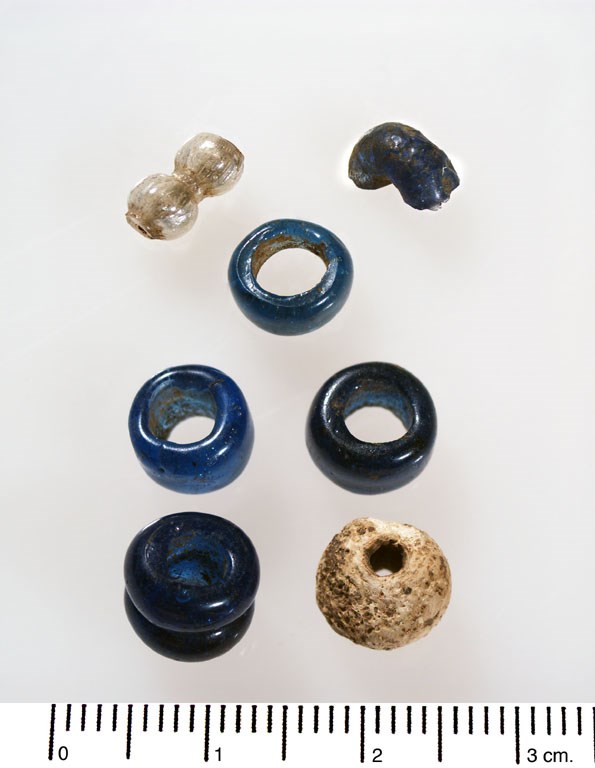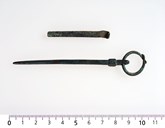Bowl-shaped brooch
The most common clothes accessories for women in the Viking Age were the so-called bowl-shaped brooches. At Ytre Moa a small fragment of an upper shell of such a brooch has been found. Other finds are a cloak pin made of bronze, a fragment of a so-called trefoil brooch, a fragment of a ring pin and a pendant, all made of bronze.
Unfinished pendant
The pendant is decorated with animal ornamentation in the Borre style. On this basis we can date this piece of jewellery to about 900 AD. The most interesting point about this brooch is that it is unfinished. For example there is no hole or lug for attaching it to a chain, and there are traces of filing on the back. This brooch was found in house site B. Other finds in the same site were a small file, two chisels, a hammer, an auger and a drill. These are all tools used for working with metal, and then mainly for fine and detailed metalwork. In addition, smithies slag has been found at Ytre Moa, admittedly in small quantities, but collectively these finds may indicate that exquisite metalwork has been carried out at the farm.
Decorated with beads
In addition to brooches and pins it was also usual to decorate themselves with beads. At Ytre Moa eight beads have been found, one of metal and the others of glass. They vary in size and form (spherical and cylindrical), colour and décor. Both mosaic beads and simple glass beads were taken into use as early as in the Migration period (from 400-600 AD), but the ones found here are of a type common in the younger Iron Age (600-1000 AD).

Razor knife
Among other personal objects found at Ytre Moa, it is worth mentioning the razor knife. This is made of iron, and the point is rolled up in a spiral. Razor knives of this type can generally be dated to the Iron Age (500 BC – 1000 AD).




